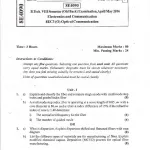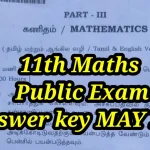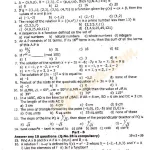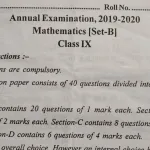What is force and how does it affect an object?
Force is a push or pull acting on an object. It can change the object’s speed, direction, or shape.
What are the types of forces?
There are two main types of forces: contact forces like friction and muscular force, and non-contact forces like gravity and magnetic force.
What is friction?
Friction is a force that opposes the motion of one surface over another. It helps in walking and holding things but can also cause wear and tear.
Why do objects fall to the ground when dropped?
Objects fall to the ground because of the gravitational force exerted by Earth.
What is inertia?
Inertia is the tendency of an object to resist any change in its state of motion or rest.
What is the unit of force?
The standard unit of force is called the newton, named after Sir Isaac Newton.
What is pressure?
Pressure is the amount of force applied per unit area. It increases if the force increases or the area decreases.
Why do sharp knives cut better than blunt ones?
Sharp knives apply the same force over a smaller area, which increases pressure and helps cut things easily.
How does atmospheric pressure affect us?
Atmospheric pressure is the force the air exerts on everything. We don’t feel it because our body balances it from inside.
What is buoyancy?
Buoyancy is the upward force that a fluid exerts on an object placed in it. It makes objects float or feel lighter in water.
Why does a stone sink in water but wood floats?
A stone sinks because it is denser than water, while wood floats because it is less dense and buoyant.
What is work in physics?
Work is said to be done when a force is applied on an object and the object moves in the direction of the force.
What is energy?
Energy is the capacity to do work. It comes in many forms like heat, light, sound, and motion.
What is kinetic energy?
Kinetic energy is the energy of an object due to its motion. A moving ball or car has kinetic energy.
What is potential energy?
Potential energy is the stored energy an object has because of its position, like a book on a shelf.
How does a pulley make work easier?
A pulley changes the direction of force, allowing us to lift heavy loads with less effort.
What is sound and how is it produced?
Sound is a form of energy that travels through a medium like air. It is produced when objects vibrate.
Why can’t sound travel in a vacuum?
Sound needs a medium like air or water to travel. In a vacuum, there are no particles to carry the sound waves.
What are good conductors of heat?
Good conductors of heat are materials like metals that allow heat to pass through them easily.
Why does metal feel colder than wood in winter?
Metal is a better conductor of heat, so it draws heat away from your hand faster, making it feel colder.
What is the speed of sound in air?
Sound travels in air at about 343 meters per second, but this can vary with temperature and humidity.
How does sound travel through solids, liquids, and gases?
Sound travels fastest in solids, slower in liquids, and slowest in gases because particles are closer in solids.
What is an echo?
An echo is a sound that reflects off a surface and comes back to the listener.
Why do we hear thunder after seeing lightning?
Light travels faster than sound, so we see lightning first and hear thunder a few seconds later.
What are luminous and non-luminous objects?
Luminous objects give off their own light like the sun, while non-luminous objects reflect light like the moon.
What causes day and night?
Day and night are caused by the rotation of the Earth on its axis.
Why do we see shadows?
Shadows are formed when an object blocks light from reaching a surface.
What is refraction?
Refraction is the bending of light when it passes from one medium to another like air to water.
Why does a straw look bent in a glass of water?
This is due to refraction, as light bends when it passes from water to air.
What is a lens?
A lens is a curved piece of glass or plastic that bends light to form images.
What is heat?
Heat is a form of energy that causes things to become warm. It moves from hot objects to cooler ones.
How do thermometers work?
Thermometers measure temperature by using a liquid that expands or contracts with heat.
What is a conductor and an insulator?
Conductors allow heat or electricity to pass through, like metal. Insulators do not, like rubber or wood.
What are renewable sources of energy?
Renewable sources include sunlight, wind, water, and biomass. They can be used again and again.
What are non-renewable sources of energy?
Non-renewable sources like coal and oil take millions of years to form and can run out.
What is electric current?
Electric current is the flow of electric charge through a wire or circuit.
What are good conductors of electricity?
Materials like copper and aluminum are good conductors of electricity.
What is a circuit?
A circuit is a path through which electric current flows. It needs a power source and a closed loop.
What is a switch?
A switch is a device that opens or closes a circuit to stop or allow the flow of electricity.
What is a magnet?
A magnet is an object that produces a magnetic field and attracts materials like iron and steel.
What are the poles of a magnet?
The ends of a magnet are called poles. One is the north pole and the other is the south pole.
What happens when you bring two magnets close?
Like poles repel each other while opposite poles attract.
What is a compass?
A compass is a device with a magnetic needle that points to the Earth’s north.
What is Earth’s magnetic field?
The Earth has a magnetic field that makes compass needles point north and south.
How are artificial magnets made?
Artificial magnets are made by rubbing iron with a magnet or passing electricity through a wire coil.
What is a simple machine?
A simple machine is a device that helps us do work with less effort, like a lever, pulley, or wheel.
What is a lever?
A lever is a rigid bar that turns around a fixed point called a fulcrum to lift loads.
How does a wheel and axle work?
It reduces friction and helps move heavy objects easily by rolling.
What is gravity?
Gravity is the force that pulls everything toward the center of the Earth.
How do astronauts float in space?
They float because there is very little gravity in space, giving them a feeling of weightlessness.
What is mass and how is it different from weight?
Mass is the amount of matter in an object and doesn’t change. Weight is the force of gravity on that mass and can change depending on location.
Recommended Indian Books for 8th Class Physics Question Papers with Authors and Publications
-
Comprehensive Physics Class 8 – Lakhmir Singh & Manjit Kaur, S. Chand Publishing
Includes concept-based explanations, solved examples, multiple-choice questions, short and long answer questions, HOTS, and activity-based exercises. -
Foundation Science Physics for Class 8 – H.C. Verma, Bharati Bhawan Publishers
Conceptual explanations with real-life applications, includes numerical-based questions, conceptual challenges, and workbook exercises for clarity. -
CBSE All In One Science Class 8 – Arihant Experts, Arihant Publications
Chapter summaries, NCERT-based theory, practice papers, and model question papers for school exams, including case-based and competency-based questions. -
Together with Science Class 8 – Rachna Sagar Publications
Contains a blend of theory, NCERT questions, additional exercises, MCQs, and previous year exam questions along with self-assessment tests. -
Oxford New Science in Everyday Life Class 8 – K. Sharma & N. Arora, Oxford University Press
Interactive content focusing on daily-life physics applications, with questions based on observation, logic, and conceptual thinking. -
Living Science Physics Class 8 – D.K. Jain, Ratna Sagar Publications
Easy-to-understand language with topic-wise explanations, activity-based learning, and a variety of practice questions including diagrams. -
Physics for Middle School Class 8 – R.S. Aggarwal & V. Aggarwal, Bharti Bhawan
Covers a mix of fundamental theory, short conceptual questions, and objective-type assessments ideal for both exams and Olympiads. -
Science Success Class 8 – S. Kohli, Goyal Brothers Prakashan
Includes textbook theory, practice papers, topic-wise questions, and teacher’s tips to tackle tricky concepts and answer formats. -
ICSE Understanding Physics Class 8 – Dr. Dalal, Evergreen Publications
Designed for ICSE pattern with chapter-wise summaries, textbook exercises, extra practice questions, and experiment-based assessments. -
Exploring Science Physics Class 8 – V. Dutta, Cordova Publications
Visual aids, illustrative activities, followed by assessment sheets, reasoning-type questions, and cross-curricular links. -
New Learnwell Science Class 8 – Meera Gupta, S. Chand Publishing
Designed with structured theory, key points for revision, sample papers, fill-in-the-blanks, and assertion-reasoning questions. -
Mastering Science Physics Class 8 – P. Rajesh, Saraswati House Pvt Ltd
Focuses on building concepts through examples, short notes, concept check questions, and quiz-style assessments. -
Exemplar Science Guide Class 8 – MTG Editorial Board, MTG Learning Media
A large variety of objective and descriptive questions, logical reasoning, practice tests, and NCERT exemplar solutions. -
Smart Science Class 8 – N.P. Gogia, New Saraswati House
Application-driven learning, problem-solving activities, test yourself sections, and model question papers. -
Learning Elementary Physics Class 8 – Rajiv Gupta, Dhanpat Rai Publications
Classical style book with simplified theory, school-level problems, and targeted exam preparation sets. -
New Millennium Physics Class 8 – K. Sharma, Millennium Booksource Pvt Ltd
Conceptual illustrations, regular checkpoints for comprehension, and varied formats of questions to strengthen foundation. -
Ace Science Physics Class 8 – S. Malhotra, Cordova Learning Series
Includes diagrams, lab-based activities, real-world applications, HOTS, and quick revision summaries. -
Step by Step Physics Class 8 – Anita Sharma, Full Marks Pvt Ltd
Simplified theory, solved textbook exercises, additional problem sets, and mind maps for better retention. -
Navneet Science Digest Class 8 – Navneet Education Ltd.
Useful for revision, includes explanations, short notes, textbook solutions, practice questions, and quick-check quizzes. -
Science Quest Class 8 – Editorial Team, G. Ram Books
Emphasis on interactive content, project ideas, review worksheets, and balanced coverage of theoretical and practical concepts.
8th Class Physics Question Paper: A Complete Guide for Smart Exam Preparation
The 8th class physics question paper plays a crucial role in laying the groundwork for future science learning. As students begin to explore foundational concepts like force, motion, energy, sound, and light, they also develop scientific thinking, problem-solving skills, and curiosity about the physical world. A well-structured question paper not only tests knowledge but also encourages logical reasoning and clarity in concepts.
In many school boards, especially CBSE and ICSE, the physics section is part of the integrated science subject. However, question papers are often designed to test each section individually. Physics typically covers 20–30 marks in most school exams, making it essential for students to be thorough in their preparation.
A good 8th class physics question paper includes a variety of question types such as multiple-choice questions, short answer questions, long answer questions, and diagram-based problems. These help evaluate a student’s understanding from different angles. It’s important to practice solving questions that involve real-life applications and conceptual reasoning rather than just memorizing definitions.
Experts recommend dividing the syllabus into smaller, manageable topics. Begin with the basics such as types of forces, laws of motion, and pressure. Use visual aids like diagrams and flowcharts to better understand energy transformation and the working of simple machines. For chapters like sound and light, focus on observation-based questions and experiment-related reasoning.
Another expert-backed strategy is to use question banks and sample papers. These resources expose students to frequently asked questions and give them a sense of the paper’s structure. Solving previous years’ physics question papers helps students develop speed and accuracy. It also builds confidence, especially for those who struggle with science.
Make use of flashcards for quick revision of terms like kinetic energy, potential energy, refraction, and echo. Interactive study methods like quizzes, group discussions, and self-evaluation can make physics more interesting and help retain concepts for a longer time.
Time management is a key factor during exams. Practice writing answers within a set time limit. Learn how to structure answers neatly—use bullet points where allowed, and draw labeled diagrams whenever applicable. Teachers often reward well-presented answers that are brief yet informative.
Lastly, don’t overlook the importance of understanding how marks are distributed in the question paper. Prioritize chapters with higher weightage and work on strengthening your weak areas. With a balanced approach that includes theory, application, and revision, students can perform well in the 8th class physics exam.
FAQ for 8th Class Physics Question Paper
What are the important topics in 8th class physics question paper?
Important topics include force and pressure, friction, sound, light, chemical effects of electric current, and some basic concepts of energy and work.
How many marks does physics carry in the 8th class science exam?
It typically carries 20 to 30 marks as part of the overall science paper, depending on the school or board’s pattern.
What types of questions are asked in the physics section?
You can expect multiple-choice questions, short and long answer questions, diagram-based questions, and reasoning-based application questions.
How can I score better in 8th class physics?
Focus on understanding the concepts, practice diagrams, solve previous papers, and revise key terms regularly using flashcards or summary notes.
Are diagrams important in the physics question paper?
Yes, diagrams such as levers, circuits, and ray diagrams are often included in exams. Drawing and labeling them correctly can help score better.
Is it necessary to solve sample papers before the exam?
Yes, solving sample papers improves your understanding of question patterns and helps with time management during the actual exam.
Should I memorize definitions for physics?
Memorizing definitions is helpful, but understanding the meaning behind them is more important for answering application-based questions.
How much time should I dedicate to physics while studying?
Around 30 to 45 minutes daily is ideal. More time can be given closer to the exam, depending on your grasp of the subject.
Do I need to prepare for oral or practical questions as well?
Yes, some schools conduct oral and practical assessments. Be familiar with basic experiments and their results.
Latest Posts
- Step-by-step guide to download and apply for jee mains admit card 202
- Comprehensive 2025 government holidays and recruitment details for job seekers
- JEE Mains Admit Card 2025: Your Step-by-Step Guide to Downloading the Hall Ticket
- Everything You Need to Know About 2025 Government Holidays Recruitment
- Comprehensive Guide to rrb d group recruitment 2025 – Eligibility, Vacancies, and Application
- Detailed guide to nps trust recruitment 2025 vacancies, eligibility and apply process
- Comprehensive guide to hpcl recruitment 2025 notification, vacancies, and application process
- ignou bed admission 2025 complete recruitment guide with eligibility and process
- Comprehensive Guide to Indian Army Agniveer Recruitment 2025 Notification and Jobs
- Everything You Must Know About CBSE Board Exams 2025 Changes & New Rules






